When conceptualizing this I realized dark wood in a corner of a living room isn't going to bring life to the space. A bit of backlighting goes a long way in situations like this. Since this was planned from the start, I actually drilled 3/4" holes through the furring strips to act as low-voltage pass-through. I ordered the lights but they didn't come until later in the week.
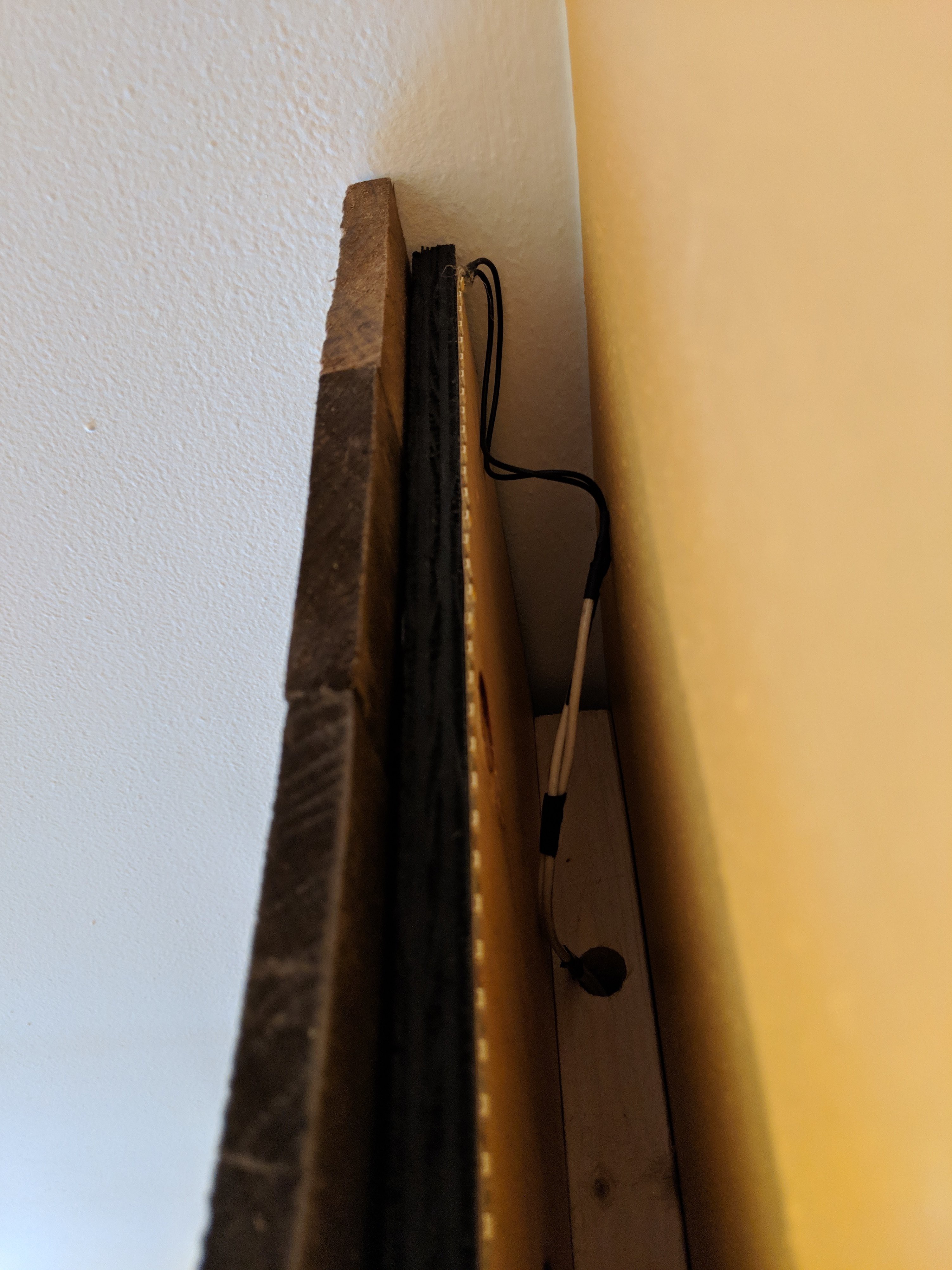
Here you can see the 12 AWG wire I had removed form the house on a previous project. It works fine for reuse on the to pass 12V from one side of the wall to the other.
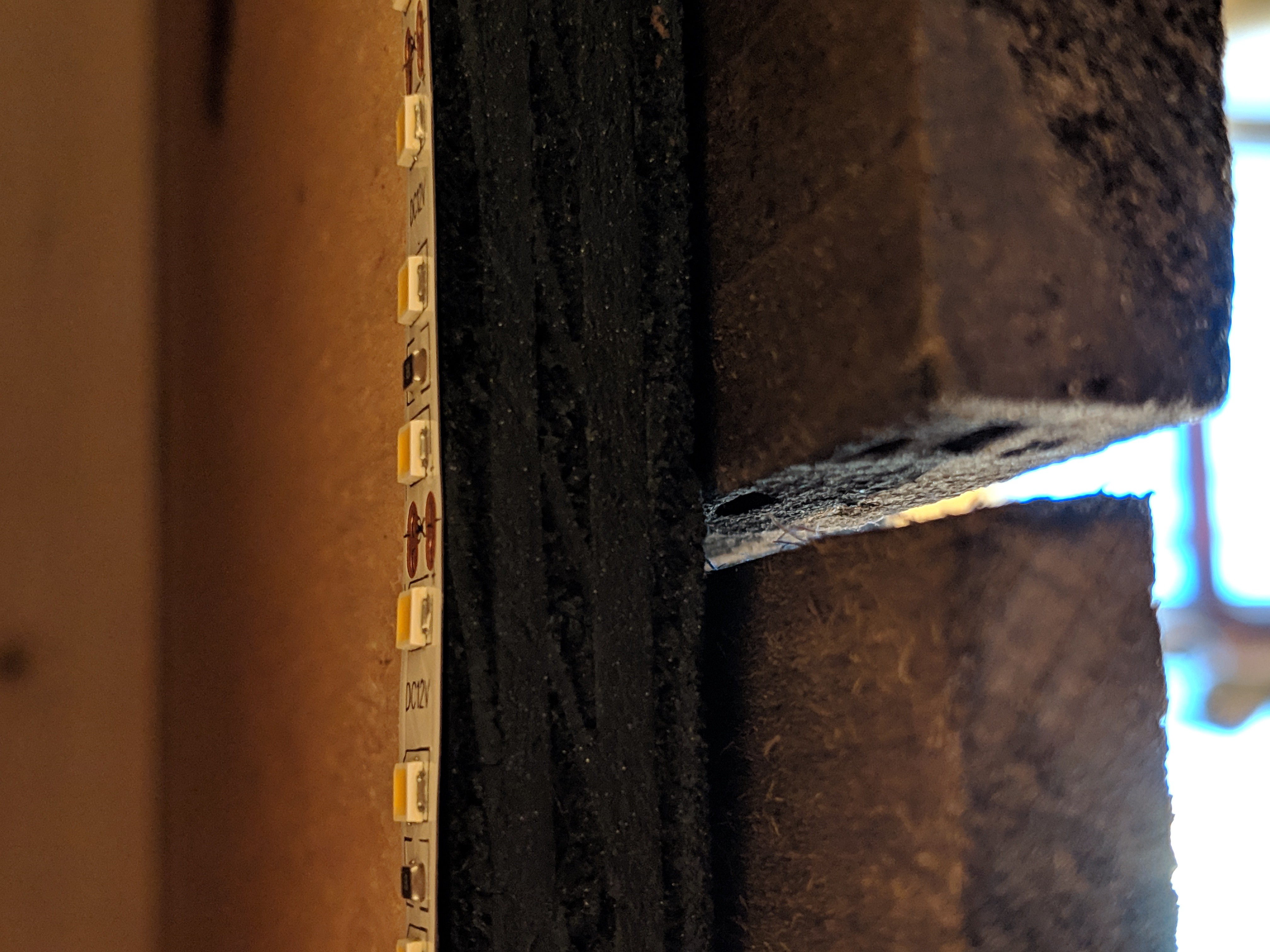
The adhesive on the back of the strips stuck a lot better than I thought it would. I bolstered it with hot glue at the top and bottom, and every few feet along the way.
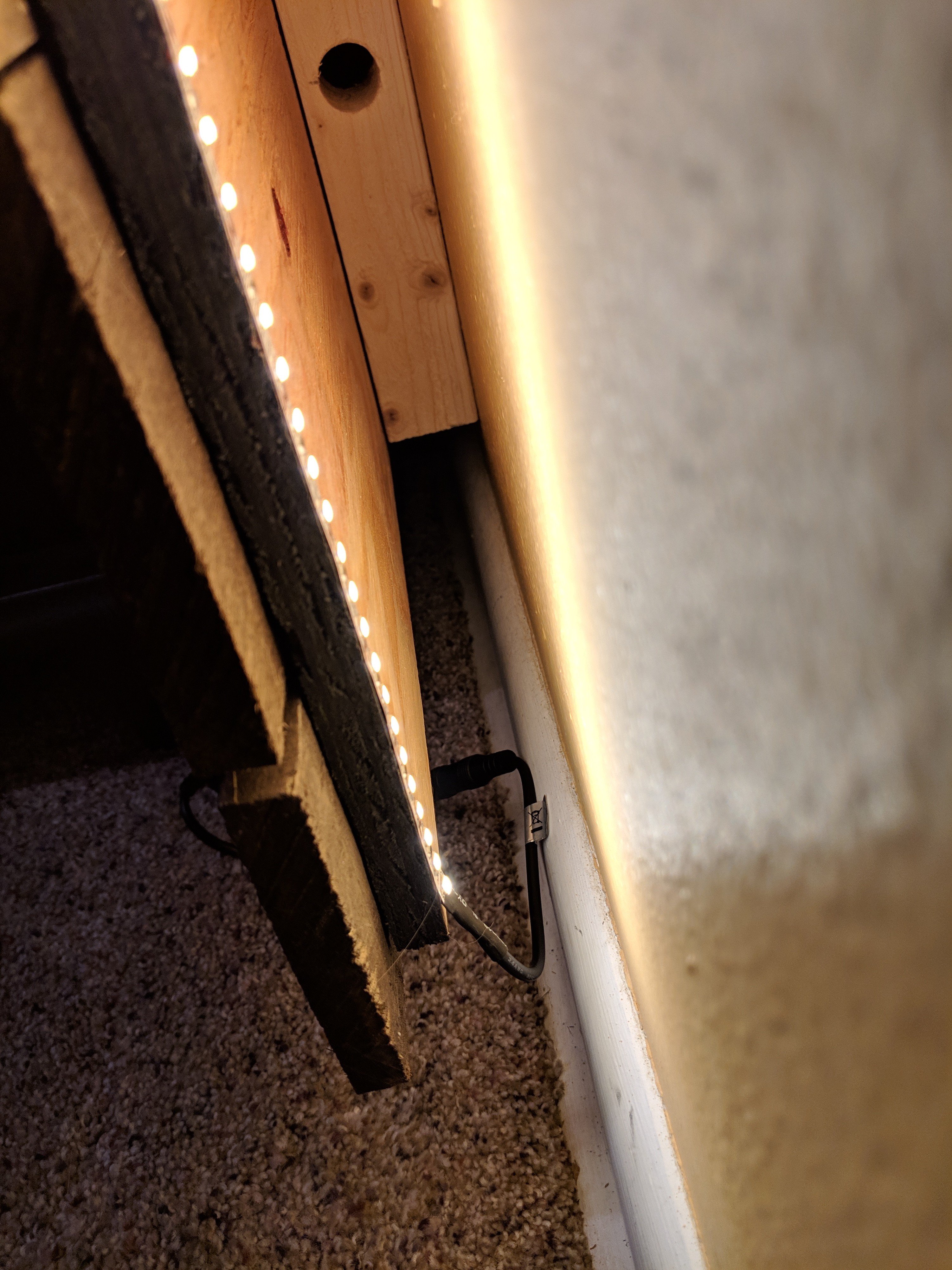
These are warm-white LEDs, 600 of them on a 5 meter strip. The whole thing cost me $22 on Amazon. I suspect the power supply is horrifying inside but it's welded shut so I didn't look. The CE rating looks suspect to say the least!
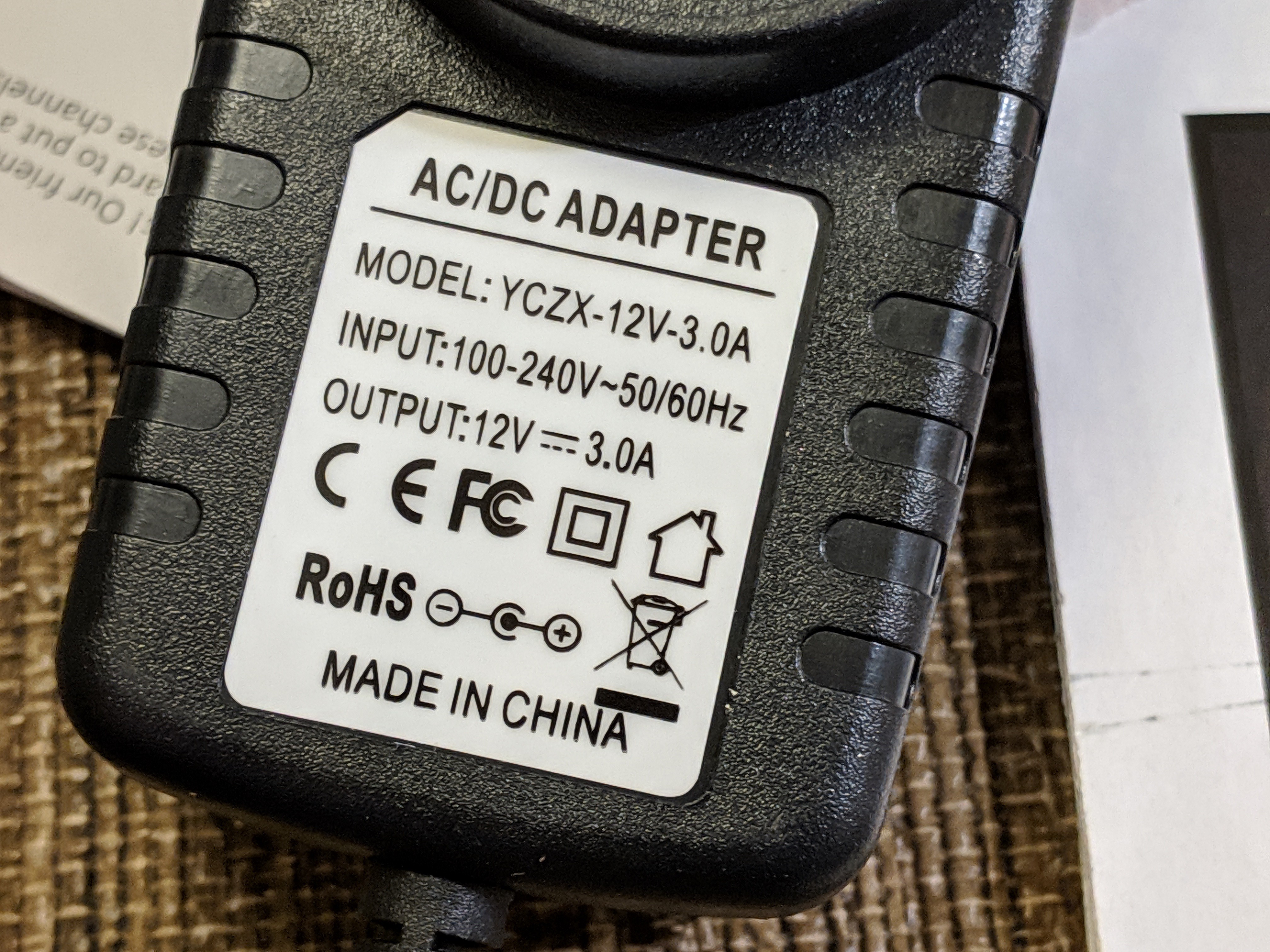
I was able to crack open the dimmer and that seems legit. It's a 555 timer driving a power MOSFET. I run it near the lowest brightness setting and get the effect I'm looking for.
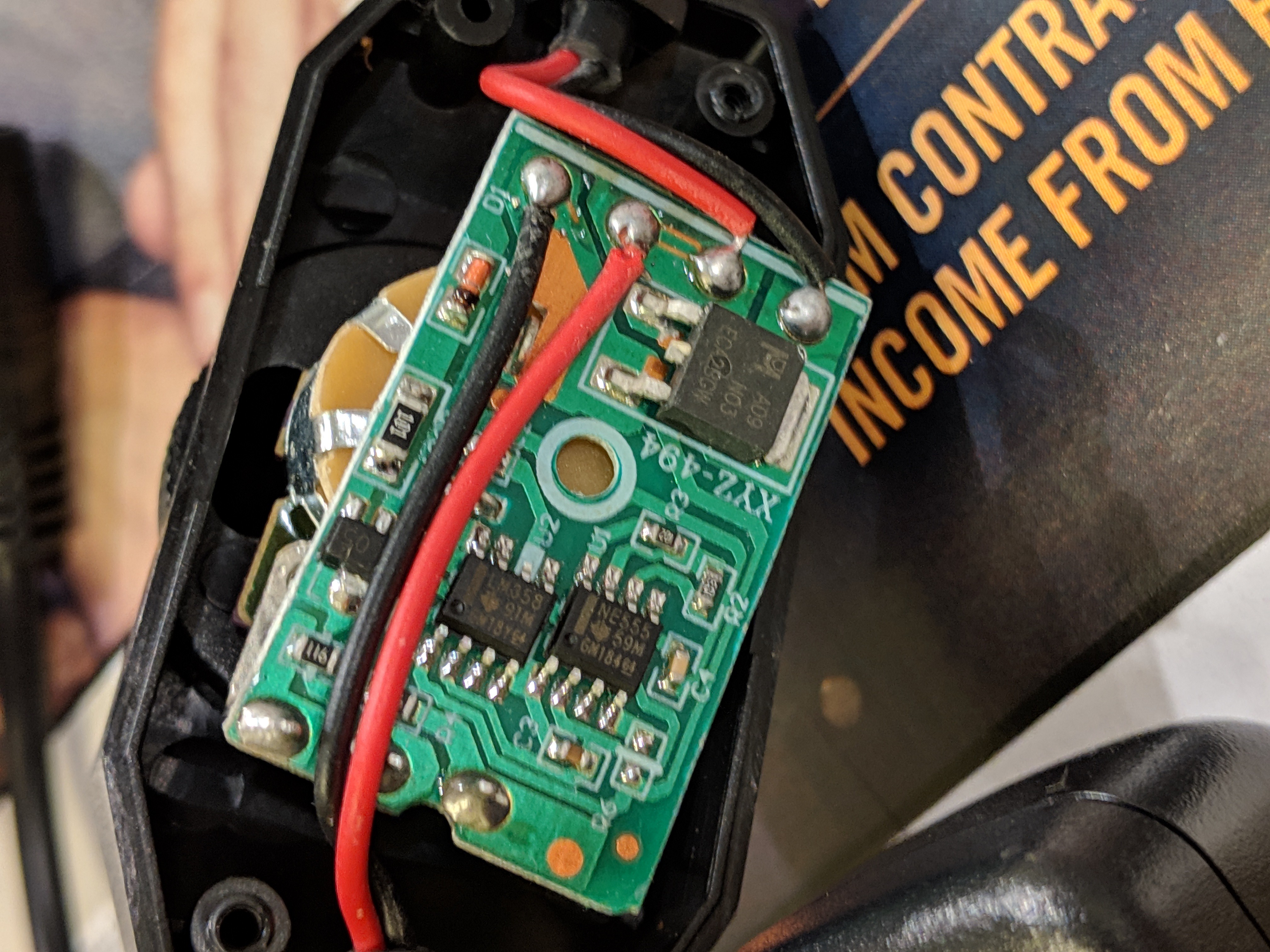
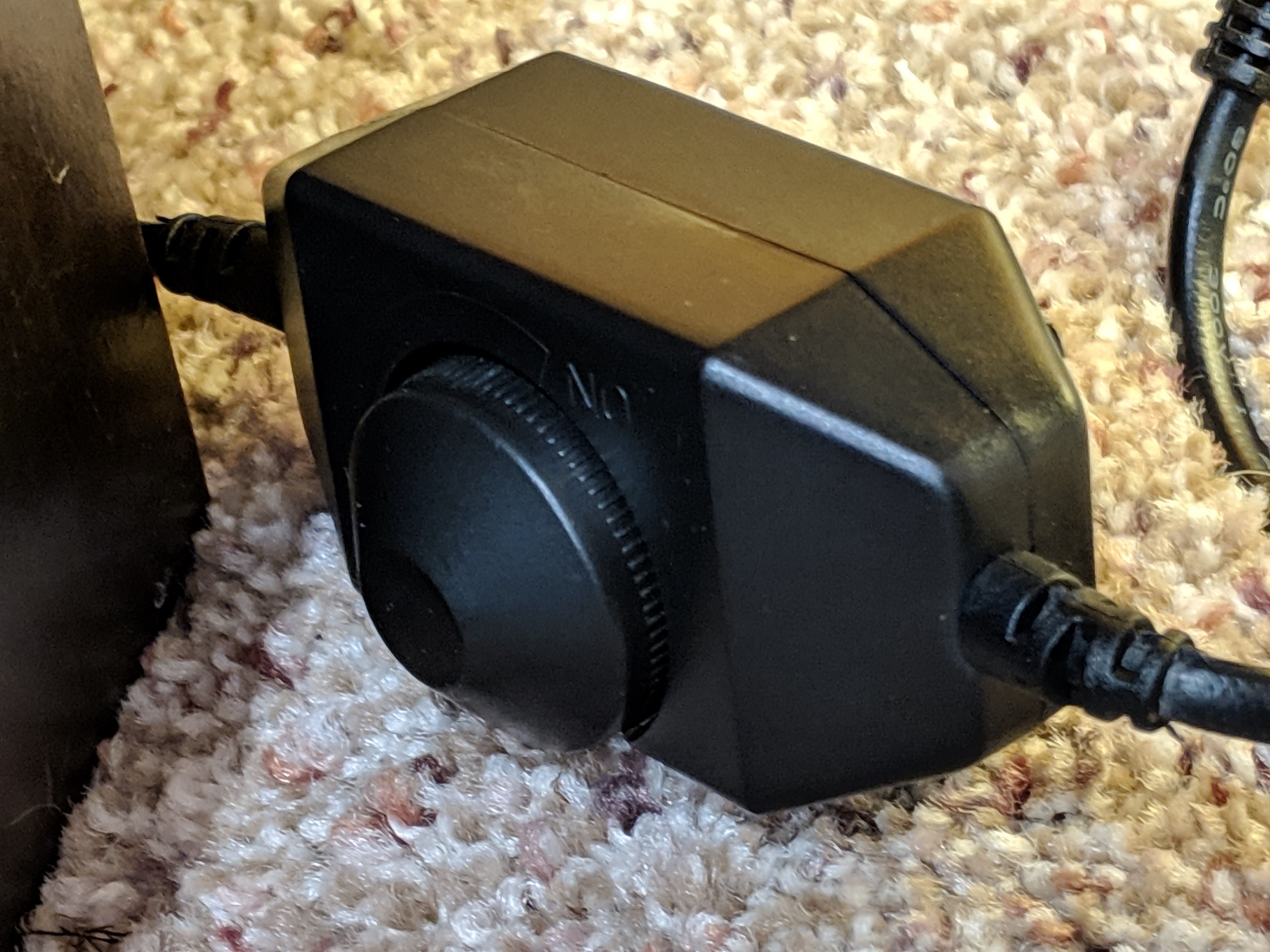
 Mike Szczys
Mike Szczys
Discussions
Become a Hackaday.io Member
Create an account to leave a comment. Already have an account? Log In.